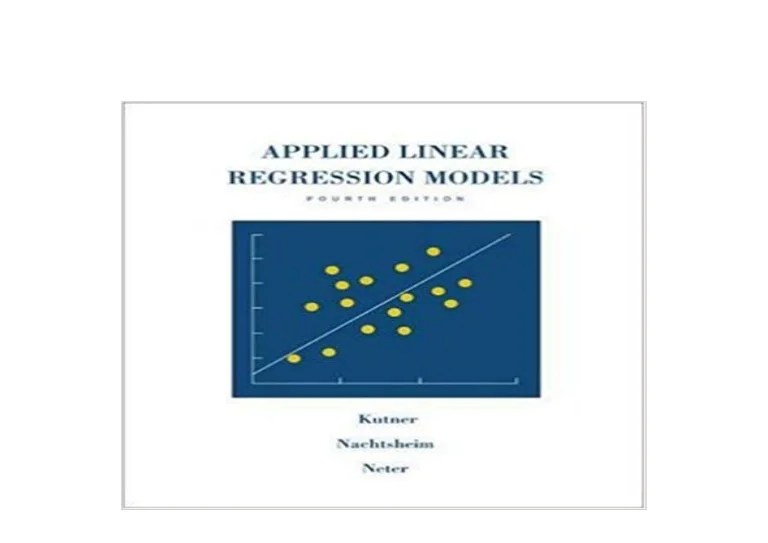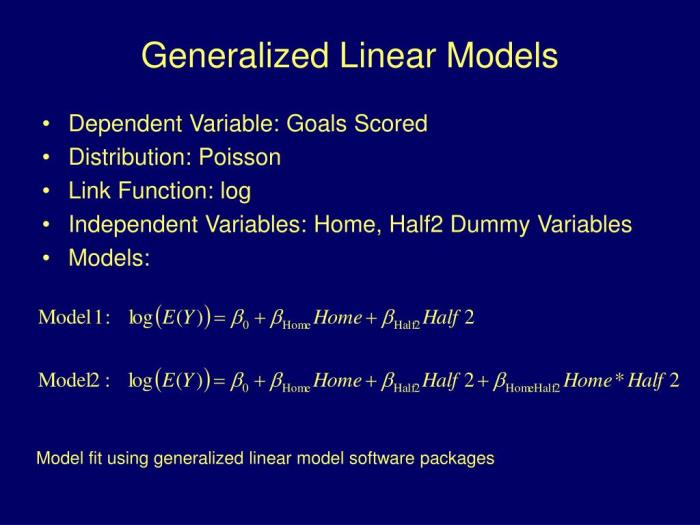Applied regression analysis and generalized linear models fox – Applied Regression Analysis and Generalized Linear Models: A Comprehensive Guide explores the fundamental concepts, applications, and best practices of these powerful statistical techniques. From understanding the assumptions and limitations of regression models to mastering the intricacies of generalized linear models, this guide provides a comprehensive overview for practitioners seeking to harness the power of statistical analysis.
Regression analysis, a cornerstone of statistical modeling, enables researchers and analysts to establish relationships between variables and make predictions. Generalized linear models extend the capabilities of regression analysis, allowing for the analysis of non-normal data and complex relationships. Together, these techniques offer a versatile toolkit for data exploration, model building, and decision-making.
Applied Regression Analysis

Regression analysis is a statistical technique used to model the relationship between a dependent variable and one or more independent variables. It is widely used in various fields, including economics, finance, healthcare, and social sciences.
Regression models make assumptions about the underlying relationship between the variables, such as linearity, normality of errors, and independence of observations. It is important to assess the validity of these assumptions before interpreting the results.
Common Regression Techniques
- Linear Regression:Models a linear relationship between the dependent and independent variables.
- Logistic Regression:Models a binary outcome variable, such as success or failure, based on a set of independent variables.
- Time Series Regression:Models the relationship between a dependent variable and its own past values, accounting for time dependence.
Generalized Linear Models

Generalized linear models (GLMs) are an extension of regression analysis that allows for a wider range of response distributions, beyond the normal distribution assumed in linear regression.
GLM Distributions
- Binomial:Models binary outcomes, such as presence or absence of a disease.
- Poisson:Models count data, such as the number of events occurring in a given time period.
- Negative Binomial:Models overdispersed count data, where the variance is greater than the mean.
GLM Applications, Applied regression analysis and generalized linear models fox
- Healthcare:Predicting disease risk, treatment effectiveness, and patient outcomes.
- Finance:Forecasting stock prices, credit risk, and portfolio performance.
- Marketing:Modeling consumer behavior, campaign effectiveness, and market segmentation.
Model Selection and Evaluation: Applied Regression Analysis And Generalized Linear Models Fox

Model selection and evaluation are crucial steps in applied regression analysis to identify the best model for a given dataset.
Model Performance Criteria
- R-squared:Measures the proportion of variance in the dependent variable explained by the model.
- AIC:Akaike Information Criterion penalizes model complexity to avoid overfitting.
- BIC:Bayesian Information Criterion also penalizes model complexity, but more strongly than AIC.
Model Selection Process
- Fit multiple candidate models to the data.
- Evaluate model performance using the criteria mentioned above.
- Select the model with the best balance of fit and parsimony.
Case Studies and Applications

Applied regression analysis and GLMs have been successfully used in numerous real-world applications:
- Predicting customer churn in a telecommunications company using logistic regression.
- Modeling the relationship between air pollution and respiratory disease using Poisson regression.
- Forecasting stock prices using time series regression with ARIMA models.
Best Practices and Ethical Considerations
Best practices and ethical considerations are essential for responsible use of applied regression analysis:
- Data Preparation:Ensure data quality, handle missing values, and transform variables as necessary.
- Variable Selection:Use domain knowledge and statistical methods to select relevant variables.
- Model Interpretation:Avoid overinterpreting results, consider potential biases, and communicate findings clearly.
Ethical Considerations
- Data Privacy:Protect sensitive data and ensure compliance with regulations.
- Bias Mitigation:Address potential biases in data and models to avoid discriminatory outcomes.
- Transparency and Accountability:Document model development and evaluation process, and be transparent about limitations.
Questions Often Asked
What are the key assumptions of linear regression?
Linearity, homoscedasticity, independence of errors, and normality of residuals.
What is the difference between a generalized linear model and a linear regression model?
GLMs extend linear regression by allowing for non-normal response variables and link functions that relate the mean of the response variable to the linear predictor.
How do you select the best model for a given dataset?
Use model selection criteria such as R-squared, AIC, and BIC, and consider factors such as model complexity, interpretability, and predictive performance.